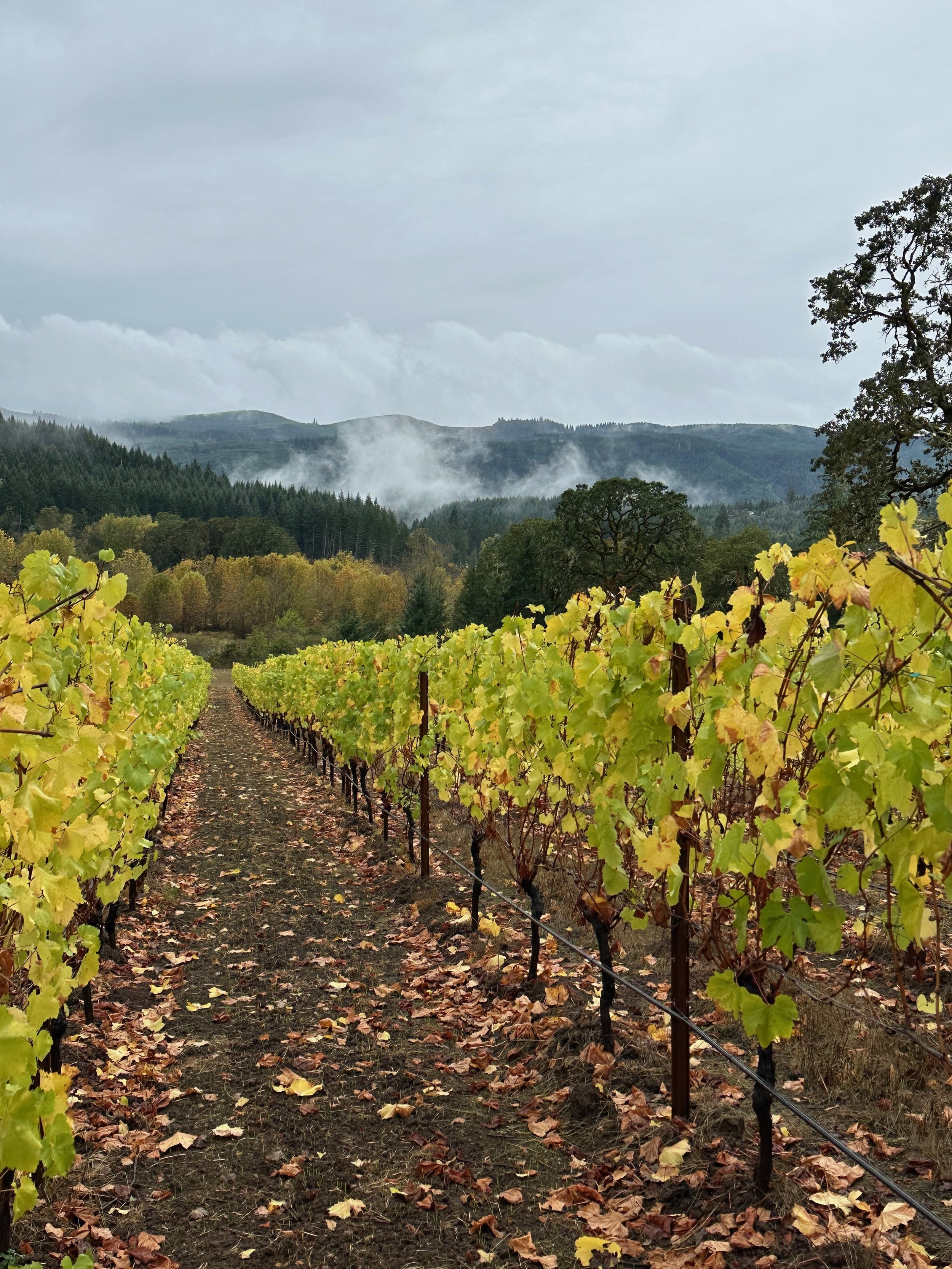
A Unique Willamette Valley Vineyard
A MONOPOLE IN THE FOOTHILLS OF THE COAST RANGE
Lonesome Rock is what the French would call a “monopole” — a vineyard in a unique place, with a micro-climate, soil, and topographical profile with no twin.
Head 7 miles west and hundreds of feet up in elevation from the tiny town of Carlton, OR, past famous Willamette Valley vineyards and deep into the rugged beauty of Oregon Wine Country—through organic farms, a butterfly sanctuary, and forests teeming with elk, bear, and mountain lions—and you’ll find Lonesome Rock tucked away alone in the Pacific Coast Range.
Farmed organically and sustainably with 270 degrees of exposure, including an uncommon, northerly-facing parcel, the well-drained hillsides at Lonesome Rock consist of the cool volcanic soils found in the Dundee Hills. Climbing from 575 to 765 ft., the 15-acre vineyard is planted to chardonnay, pinot meunier, and 5 different heritage, dijon, and exotic clones of pinot noir.
Mountains to the north and west protect us from threatening precipitation during the growing season by creating a “rain shadow,” while the elevation and coastal influences result in a 45-degree difference between day and nighttime temperatures during the critical weeks of ripening. These unique micro-climatic conditions work together, allowing our naturally low-yielding vineyard to ripen incrementally — fully but slowly — resulting in wines that hold on to an electric acidity and the potential for rare ageability.
The singular taste this land and eco-system creates is what we’ve been looking for since our earliest days in France.
Committed to preserving the integrity of the land for future generations, we are certified LIVE sustainable (Low Input Viticulture and Enology), a testament to our rigorous adherence to practices that promote ecological balance and biodiversity.
